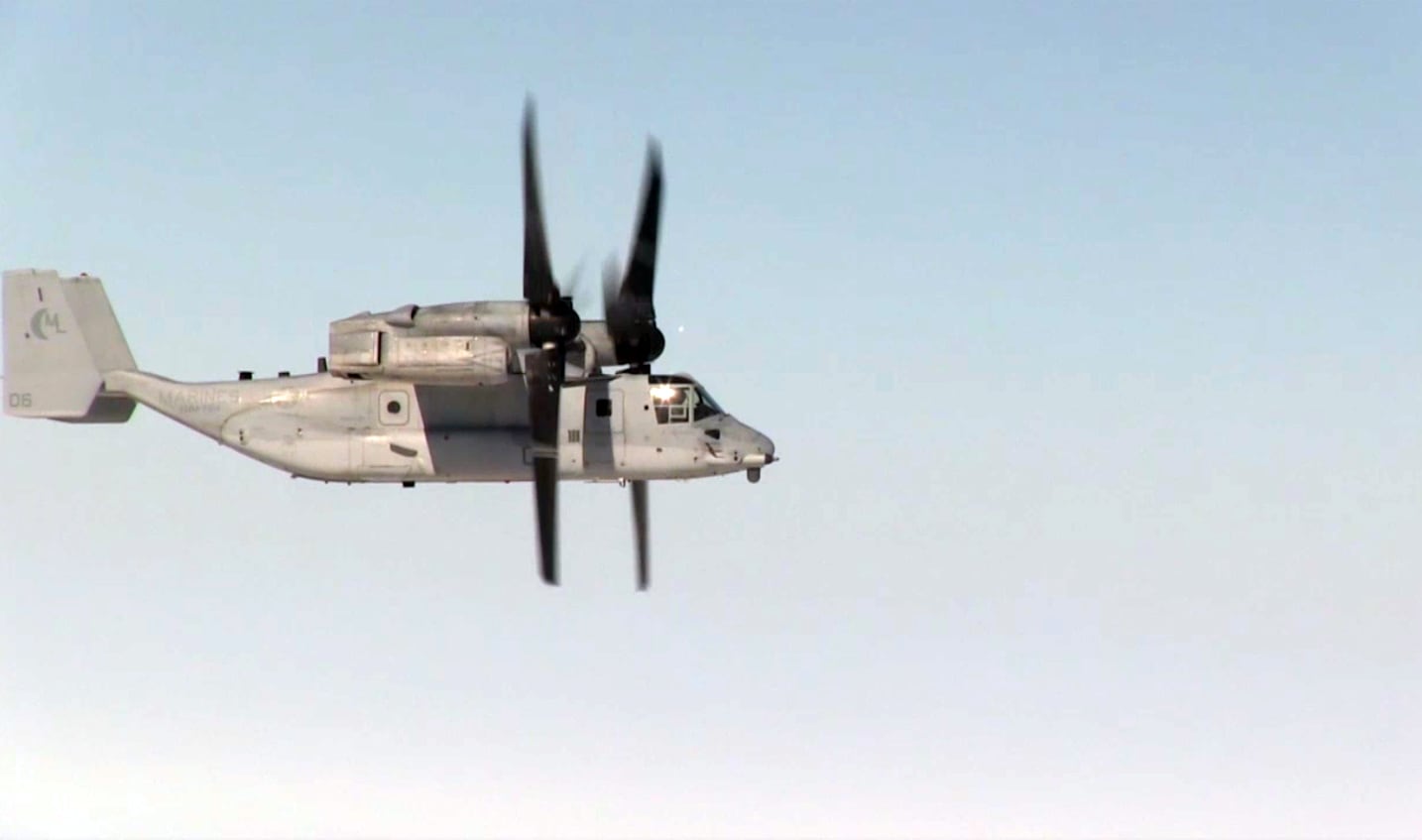The Marine Corps set a new distance record for Osprey flights in the Western Hemisphere on Tuesday as three MV-22Bs traveled 6,165 miles from Marine Corps Air Station Miramar, California, to Rio de Janeiro, Brazil.
Flight crews from Marine Medium Tiltrotor Squadron 764, 4th Marine Air Wing, flew from set a new distance record for Osprey flights on Tuesday, as three MV-22Bs traveled 6,165 miles from Marine Corps Air Station Miramar, California, to Rio de Janeiro, Brazil. The Marines made the journey as part of UNITAS Amphibious 2015, a nine-day multinational maritime exercise that runs through Nov. 24. About includes approximately 1,000 troops marines from Brazil, Canada, Chile, Colombia, Mexico, Paraguay and Peru are participating. It runs from Nov. 16-24.
The Osprey squadron made a five-leg flight that included stops in Trinidad, and Tobago, and Brazil, said according to 1st Lt. Tyler Hopkins, a UNITAS spokesman for Marine Corps Forces South. The three Ospreys were supported by three KC-130J Hercules tankers from Marine Aerial Refueler Squadron 234 and one KC-130 from Marine Aerial Refueler Squadron 452, 4th Marine Air Wing, Marine Forces Reserve.
The flight took five days as leadership decided to wait out some bad weather, said Lt. Col. Greg Gehman, commander of the VMM-764 Moonlighters. Lessons learned from the long flight will lead led lead to faster and more efficient responses, and help to better prepare flight crews for crossing international boundaries and dealing with environmental concerns, he said.
Such challenges were evident when Special-Purpose Marine Air-Ground Task Force Crisis Response was called into action in January 2014 to help evacuate the U.S. Embassy in Juba, South Sudan. The team, based out of Morón, Spain, flew nearly 4,200 miles (roughly the distance from Anchorage, Alaska, to Miami) to pull more than 20 embassy personnel out of the country amid violence between factions on the brink of civil war.
The necessity of aerial refueling for the Osprey was a key part of the mission, and the factor. The KC-130 Super Hercules allowed the crisis response Marines force to travel quickly to the site, conduct a speedy mission and prevent a potential catastrophe.

The Ospreys will lead helicopter operations for UNITAS Amphibious Operations 2015, and will be assisted by Brazil and Mexico.
Photo Credit: Screen grab from Marine video by Cpl Bethany Barnoski
That is not to say the Osprey hasn’t been extending its reach. Six Ospreys and two KC-130Js in April 2013 flew from Marine Corps Air Station, New River, North Carolina .C., to Moron De La Frontera, Spain. That 15-hour flight marked the longest and largest transatlantic flight of any Osprey squadron to date.
Four months later, two Ospreys completed the longest MV-22 Osprey tanking mission in the Pacific. The Marines flying those aircraft took off It launched from Marine Corps Air Station Futenma, Japan, and landed ended in Townsville, Australia.
In South America, the Ospreys will lead helicopter operations for UNITAS, and will be assisted by Brazil and Mexico. Members of Leathernecks from 23rd Marines Regiment, 4th Civil Affairs Group and 4th Marine Logistics Group will also participate in the exercise play part.
During the exercise, the troops True to the Marine nature, participating countries will conduct conduct plenty of training in military operations in urban terrain and live-fire exercises. A final amphibious and humanitarian assistance/disaster relief exercise is set for Nov. 19 at Ihla de Marambaia.
"Exercises like UNITAS Amphib provide real world scenarios for Reserve Marines to train in," Hopkins said. "This allows them the ability to seamlessly integrate with their active duty counterparts and maintain readiness and fosters friendly cooperation and understanding among all participating forces."




